The Fountain of Time

Above is a view of Chicago's Midway Plaisance, looking west from the center, towards Lorado Taft's 100-foot long 'Fountain of Time' made in 1910-1922.

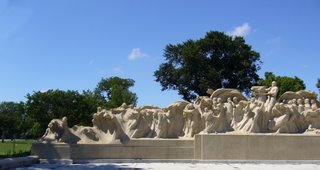
My feelings are split concerning this monumental achievement.
It presents a cavalcade of humanity -- and what else can non-religious/non-political figure sculpture do ?
And there is a sweeping, rhythmic sense of overall design --like the funerary cavalcade presented in relief on a Wei dynasty monument at the Art Institute.
But on the other hand -- it's not far removed from the bodacious carnival that was located here 15 years before this project was begun (the namesake for the 'midways'of American carnivals ever since) -- i.e. it just feels so hoaky.

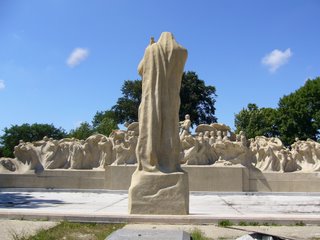
Especially this big, goofy, hooded character -- who, like Taft's Eternal Silence has all the profundity of a cartoon villain.
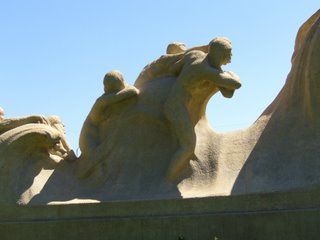

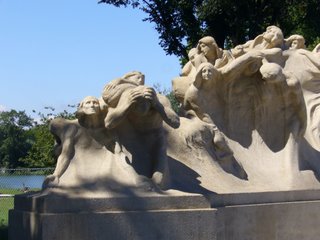
The multi-figure combinations just don't seem to rise above comic book -- or school book -- illustration for me. Overall power is not maintained in the quest for poignant detail.

But some of the details are poignant -- like this little episode of lovers (who feel so American -- like Jack and Diane)
Maybe we should consider this more like a compilation of 3-minute pop songs, rather than the majestic symphony that it was clearly intended to become.
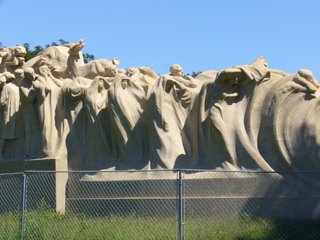
Here's a section from the back that does seem symphonic -- at least from a certain distance.
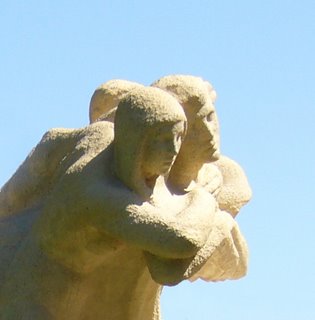
Here's a detail of what troubles me about the restoration -- i.e. I don't believe this rough-grained surface was original to the piece -- although, as I recall from how it looked 25 years ago, the original concrete surface had been so badly mauled by Chicago weather, maybe this thick-pasty-grainy treatment was the best way to go -- taking the surface back before it was finished -- so the masses and movements are still there -- but the surface planes are definately gone.
More details will be posted as time permits.


2 Comments:
It is interesting how often segments or details can speak to us, but the whole may elude taste. Something for everyone? Perhaps it boils down to the sculptor's touch...whether or not s/he merely expresses the beautiful, attempts the sublime, or actually manages to give us a glimpse of the sublime. Some of my favorite monumental pieces are hidden rather than exposed like the one you've documented here. Are you familiar with Karl Bitter's The Spirit of Transportation? It is seemingly neglected in the Philadelphia train station, and there is a woman with horses within the composition that I wanted to sit and look at for the duration of my trip. The rest of the piece I could do without, but it is an overall rich example of bas-relief and alto-relief combined into one.
A good reason to go to Philadelphia.
There's a Karl Bitter ecclesicastical piece in the sculpture court at the Met. It's nice -- but did not compel my worship or amazement.
There's very little, if anything, that compares in scale with the "Fountain of time" in America. It's 200 feet of deep relief (100 feet on each side)
I want to cheer for the sculptor -- his probably poorly paid assistants -- and the Chicago park district that gave him that commanding space to work with.
It's not religous -- or military -- neither am I -- but like me -- it's just people living -- traveling through time and space.
I just wish it were better.
Post a Comment
<< Home